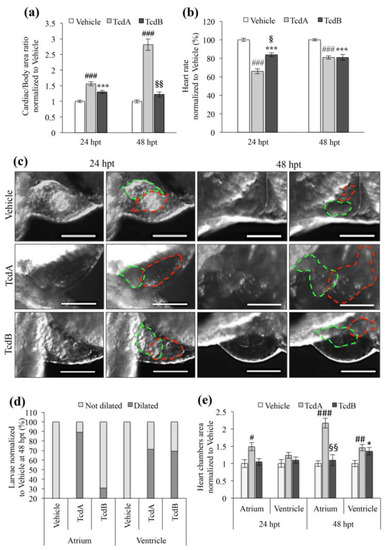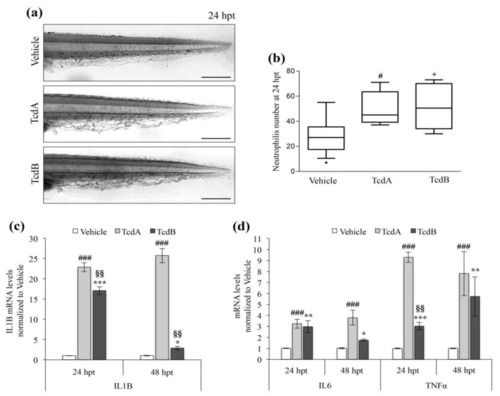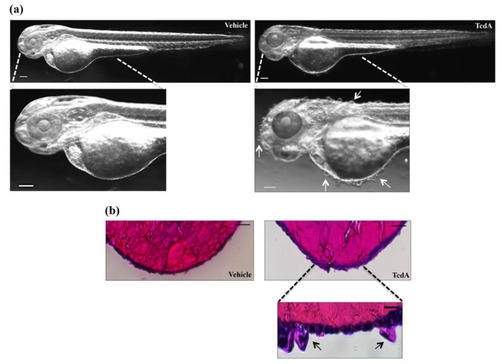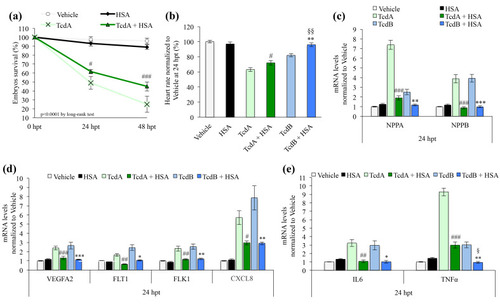- Title
-
Extra-Intestinal Effects of C.difficile Toxin A and B: An In Vivo Study Using the Zebrafish Embryo Model
- Authors
- Tonon, F., Di Bella, S., Grassi, G., Luzzati, R., Ascenzi, P., di Masi, A., Zennaro, C.
- Source
- Full text @ Cells
|
|
|
Effects of TcdA and TcdB treatment on zebrafish embryos heart. ( |
|
Cardiac hypertrophy markers analysis confirms the early role of TcdA in inducing heart damage compared to TcdB in zebrafish embryos. ( |
|
TcdA and TcdB induce different effects on the vascular system of zebrafish embryos. ( |
|
|
|
TcdA and TcdB promote the inflammatory response and active the immune system. ( |
|
TcdA administration induced skin alteration in zebrafish embryos. ( |
|
Human serum albumin (HSA) protects zebrafish embryos towards |








